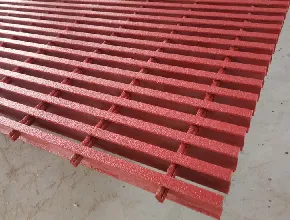loading...
- No. 9, Xingyuan South Street, Dongwaihuan Road, Zaoqiang County, Hengshui, Hebei, China
- admin@zjcomposites.com
- +86 15097380338
- Welcome to visit our website!
FRP Pressure Vessels Design and Applications in Modern Engineering Solutions
Understanding FRP Pressure Vessels A Comprehensive Overview
Fiber Reinforced Plastic (FRP) pressure vessels are becoming increasingly popular in various industrial applications due to their unique combination of lightweight properties, high strength, and corrosion resistance. Constructed primarily from a composite material that combines a polymer matrix with fiber reinforcement, these vessels offer a significant advantage over traditional materials such as metal and concrete. In this article, we will delve into the design, manufacturing, applications, advantages, and challenges associated with FRP pressure vessels.
Design and Manufacturing
The design of FRP pressure vessels involves meticulous consideration of various parameters, including shape, size, and operating conditions. Commonly used fibers in the reinforcement process include glass, carbon, and aramid, each offering different benefits depending on the application's requirements. The most widely employed material in the industry is glass fiber, which provides excellent strength at a lower cost.
The manufacturing process typically involves techniques such as filament winding, hand lay-up, or resin transfer molding. Filament winding is particularly favored for its ability to produce uniformly strong structures, as it allows for precise control over the orientation and density of the fibers. Once the layers of fibers and resin are applied, the vessel is cured, often under heat and pressure, to achieve its final strength.
Applications
FRP pressure vessels are utilized in a broad range of applications across multiple industries. The chemical industry, for instance, frequently employs FRP vessels for storing and transporting corrosive substances. The oil and gas sector benefits from FRP due to its lightweight nature, which facilitates easier transport and installation, especially in offshore platforms. Additionally, FRP vessels are essential in the water treatment industry, where they are used for storing and handling chemicals necessary for water purification processes.
In the aerospace and transportation industries, the use of FRP pressure vessels is on the rise, particularly for storing hydrogen and other gasses in lightweight, high-strength tanks. These vessels are critical for the development of fuel cell technologies, contributing to more sustainable transportation solutions.
frp pressure vessels

Advantages of FRP Pressure Vessels
The primary advantage of FRP pressure vessels lies in their exceptional resistance to corrosion, which significantly extends their lifespan and reduces maintenance costs. Unlike metal vessels, FRP vessels do not rust, making them ideal for use in harsh chemical environments. Moreover, their lightweight nature allows for easier handling and installation, reducing transportation costs and labor requirements.
Another significant benefit is their design flexibility. FRP can be molded into various shapes and sizes, enabling the creation of vessels tailored to specific uses and optimizing available space in various industrial setups. This adaptability, coupled with the ability to withstand high pressures and temperatures, makes FRP a versatile choice for many applications.
Challenges and Considerations
Despite their advantages, FRP pressure vessels are not without challenges. One primary concern is the initial cost, which can be higher than that of traditional materials. The manufacturing process also requires skilled labor and specialized equipment, contributing to the overall expense. Furthermore, while FRP offers excellent strength in tension, it may not perform as well under certain types of loads, such as impact or shear, compared to metals.
Another consideration is the regulatory landscape. FRP vessels must meet specific industry standards and certifications to ensure safety and reliability. Obtaining these certifications can be time-consuming and may require additional testing and validation.
Conclusion
FRP pressure vessels represent a significant advancement in materials technology, offering numerous advantages for various industrial applications. Their lightweight, corrosion-resistant properties, combined with their flexibility in design, make them a preferred choice in many sectors. However, potential users must weigh the benefits against the challenges posed by cost and regulatory compliance. As industries continue to evolve and seek more sustainable solutions, FRP pressure vessels are likely to play an increasingly important role in the future. Understanding their capabilities and limitations will be essential for engineers and decision-makers as they navigate the complexities of modern material selection and design.
-
Transform Your Spaces with FRP Grating SolutionsNewsNov.04,2024
-
The Versatility and Strength of FRP RodsNewsNov.04,2024
-
The Excellence of Fiberglass Water TanksNewsNov.04,2024
-
The Benefits of FRP Grating for Your ProjectsNewsNov.04,2024
-
Elevate Your Efficiency with FRP Pressure VesselsNewsNov.04,2024
-
Welcome to the World of FRP Pressure VesselsNewsOct.12,2024
-
Unveiling the Future of Filtration: Why FRP Filter Vessels are a Game ChangerNewsOct.12,2024
